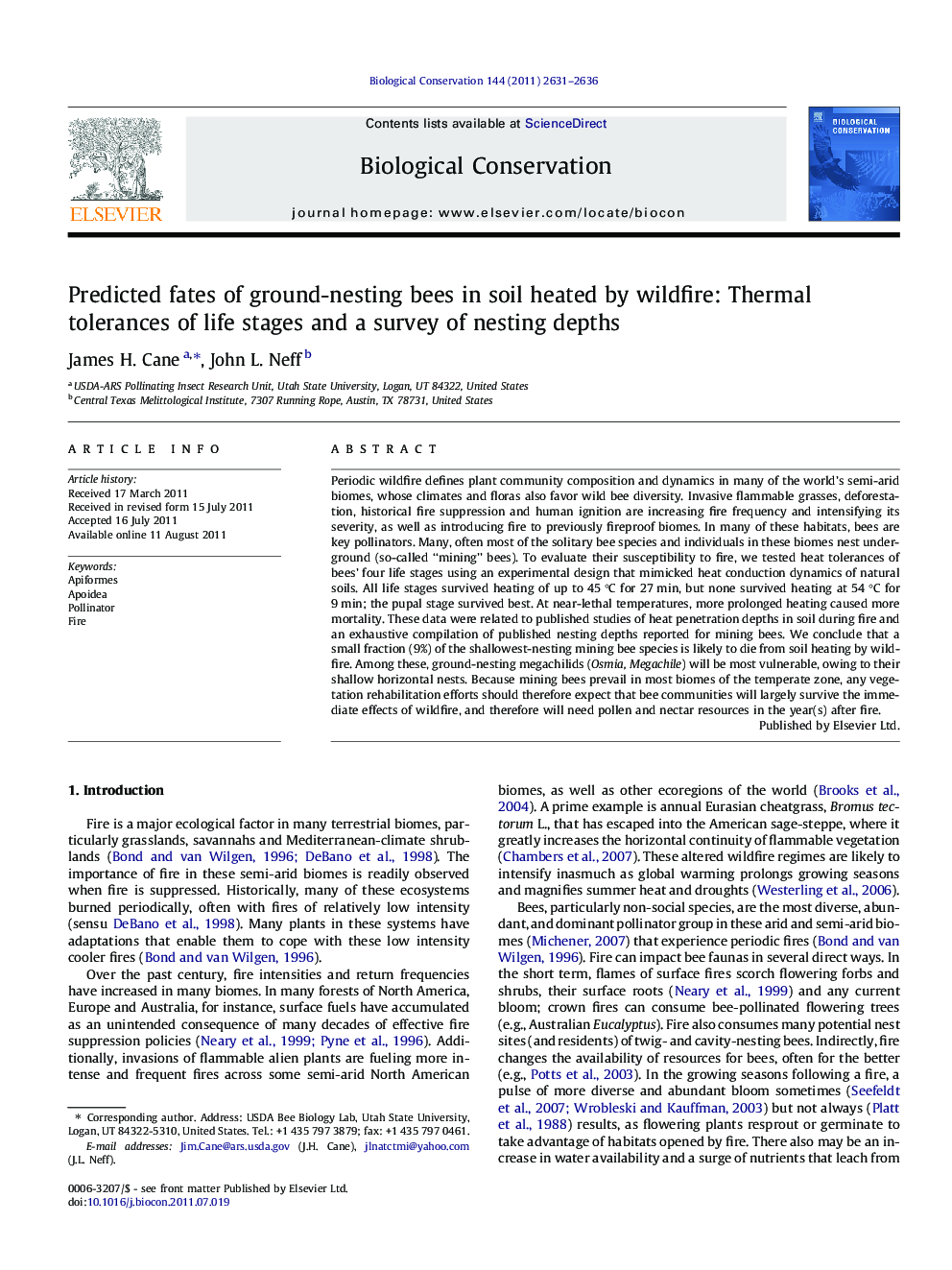| کد مقاله | کد نشریه | سال انتشار | مقاله انگلیسی | نسخه تمام متن |
|---|---|---|---|---|
| 4385389 | 1304534 | 2011 | 6 صفحه PDF | دانلود رایگان |

Periodic wildfire defines plant community composition and dynamics in many of the world’s semi-arid biomes, whose climates and floras also favor wild bee diversity. Invasive flammable grasses, deforestation, historical fire suppression and human ignition are increasing fire frequency and intensifying its severity, as well as introducing fire to previously fireproof biomes. In many of these habitats, bees are key pollinators. Many, often most of the solitary bee species and individuals in these biomes nest underground (so-called “mining” bees). To evaluate their susceptibility to fire, we tested heat tolerances of bees’ four life stages using an experimental design that mimicked heat conduction dynamics of natural soils. All life stages survived heating of up to 45 °C for 27 min, but none survived heating at 54 °C for 9 min; the pupal stage survived best. At near-lethal temperatures, more prolonged heating caused more mortality. These data were related to published studies of heat penetration depths in soil during fire and an exhaustive compilation of published nesting depths reported for mining bees. We conclude that a small fraction (9%) of the shallowest-nesting mining bee species is likely to die from soil heating by wildfire. Among these, ground-nesting megachilids (Osmia, Megachile) will be most vulnerable, owing to their shallow horizontal nests. Because mining bees prevail in most biomes of the temperate zone, any vegetation rehabilitation efforts should therefore expect that bee communities will largely survive the immediate effects of wildfire, and therefore will need pollen and nectar resources in the year(s) after fire.
► The perils posed for bees in soil heated by fire were evaluated.
► All life stages survived conducted heat and durations expected below 5–10 cm depth.
► Only 9% of 449 mining bee species reviewed nest so shallowly, mostly Megachilidae.
► Fire will kill wood- and twig-nesting bees, but the many mining bees will survive fire.
► Restoration seedings should include forbs that feed mining bees in the year after fire.
Journal: Biological Conservation - Volume 144, Issue 11, November 2011, Pages 2631–2636